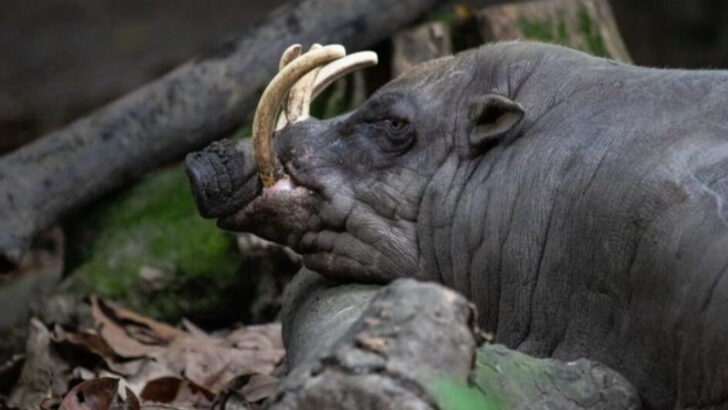The babirusa looks like it escaped from a myth—and then crashed headfirst into a horror movie.
This wild pig sports tusks so twisted they can pierce its own skull. Not in a metaphorical sense—literally. One wrong move, and those tusks can curve straight into its brain. Nature really went off-script with this one.
Found deep in the forests of Indonesia, the babirusa doesn’t oink like your average farm pig. It doesn’t root around for truffles or roll in mud with much interest either. Instead, it struts through the undergrowth like a creature caught between ancient legend and modern nightmare.
Never heard of it? You’re not alone. But once you see this toothy oddball, you’ll never forget it.
Get ready for seven reasons this wild pig might be the strangest animal on Earth—and why it deserves way more fame than it’s getting.
Unconventional Tusks
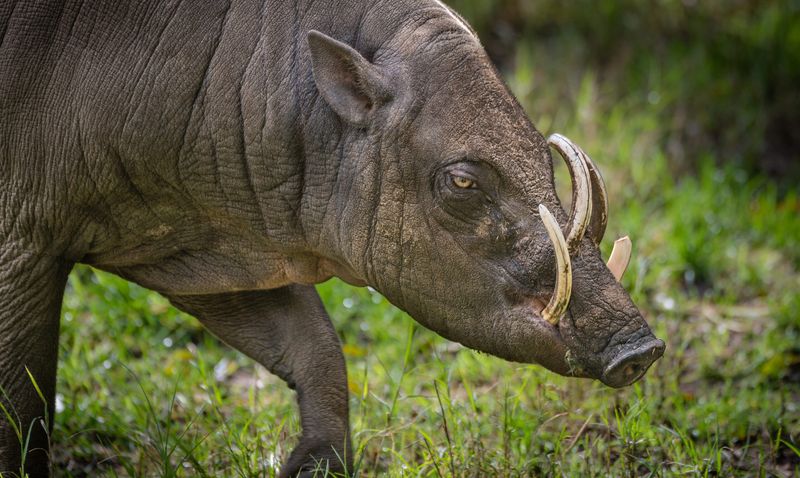
The babirusa’s tusks are a sight to behold, curving upward from the snout in a way that’s both fascinating and perplexing. These tusks grow continuously, sometimes even piercing through the animal’s skin.
Unlike typical boar tusks, which curve outwards, the babirusa’s tusks loop back towards its forehead. This unique feature serves no apparent defensive purpose, making it an evolutionary enigma.
In the wild, the tusks can sometimes grow long enough to penetrate the skull, though such occurrences are rare. Their primary role remains a subject of ongoing research and debate.
Mysterious Behavior

Babirusas exhibit a range of behaviors that leave researchers intrigued. Known for their love of mud wallowing, these creatures use mud as a way to cool down and protect their skin from parasites.
But their interactions go beyond mere survival tactics. Babirusas are often seen playing with objects or engaging in non-aggressive interactions with each other, suggesting a social complexity not fully understood.
Their unpredictable actions are both a delight and a challenge for those studying them. Observing them can feel like witnessing nature’s mysteries in motion.
Dietary Habits
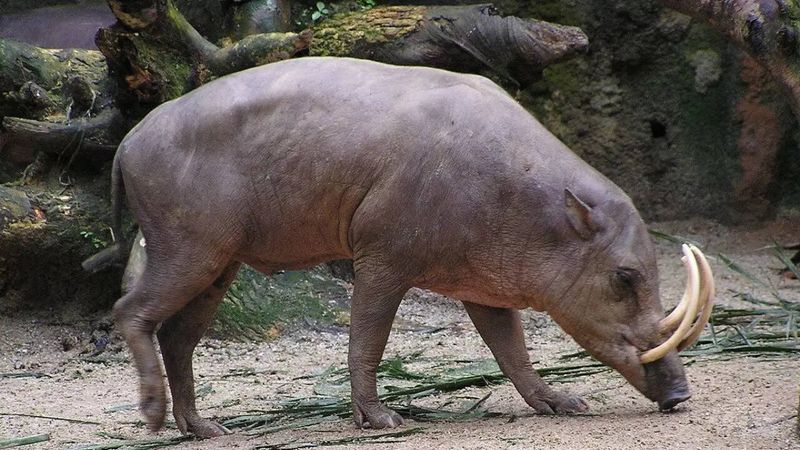
Babirusas have an omnivorous diet that sets them apart from many other wild pigs. They forage for fruits, leaves, and small animals, displaying a diverse palate.
This adaptability in diet helps them thrive in various environments, from dense forests to more open habitats. Their feeding habits play a crucial role in seed dispersal, contributing to the ecosystem’s health.
Interestingly, babirusas have been observed selecting specific plants, possibly for medicinal purposes, hinting at a deeper understanding of their natural world.
Unique Social Structure
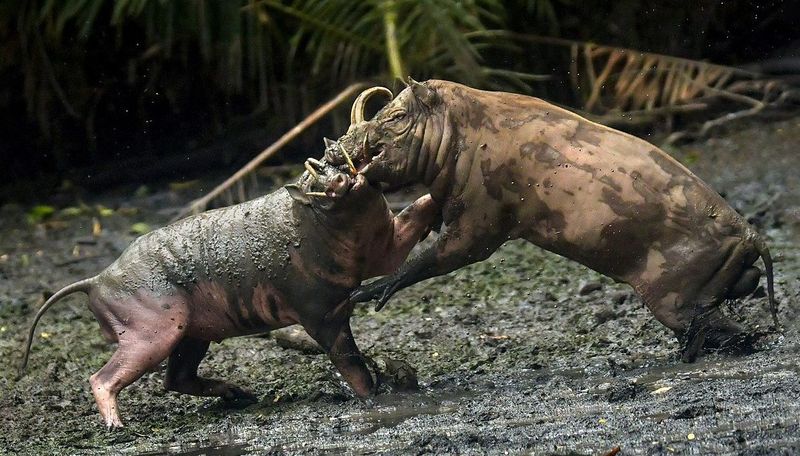
The social life of babirusas is as intriguing as their appearance. These animals often form small groups, led by a dominant male, though female-led groups are not uncommon.
Social bonds within these groups can be strong, with members grooming and playing together. The dynamics change with the seasons, reflecting the adaptability of their social structure.
This flexibility allows babirusas to respond to environmental pressures and opportunities, making them a fascinating subject for behavioral studies. Their social interactions reveal much about their intelligence and adaptability.
Cultural Significance
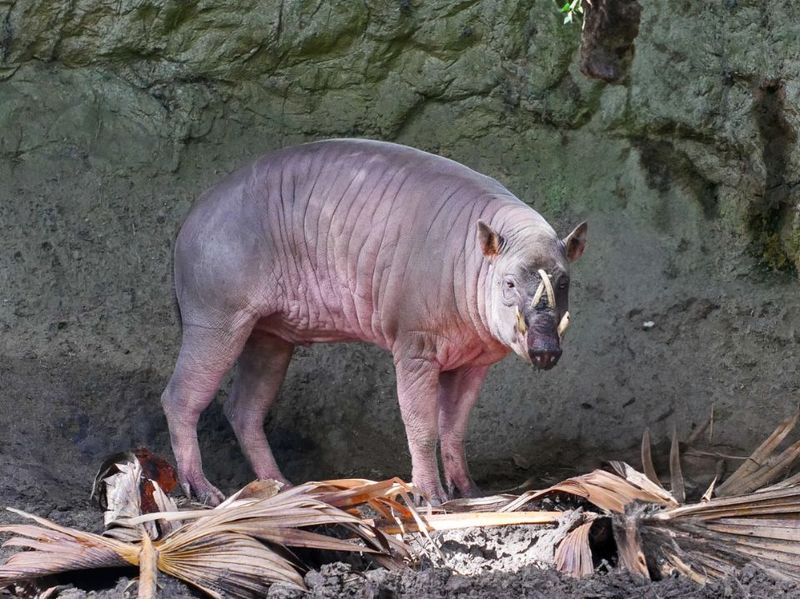
In Indonesian culture, the babirusa holds a unique place in folklore and tradition. Often seen as a symbol of strength and mystery, it features in various local legends.
Traditional art and crafts frequently depict the babirusa, reflecting its cultural resonance. These representations sometimes emphasize its otherworldly appearance, adding to its mystique.
The babirusa’s role in cultural narratives highlights the deep connection between the people and their natural heritage, offering insights into how humans perceive and relate to this enigmatic creature.
Conservation Challenges

Despite its obscurity, the babirusa faces numerous threats in the wild, primarily due to habitat loss and hunting. Conservation efforts are underway to protect this unique species.
Protected areas and wildlife reserves play a crucial role in safeguarding their populations, providing a natural refuge from human activities. However, challenges remain, including illegal hunting and environmental degradation.
Raising awareness about the babirusa’s plight is essential for its survival, encouraging more robust conservation measures and international cooperation.
Unclear Evolutionary Path
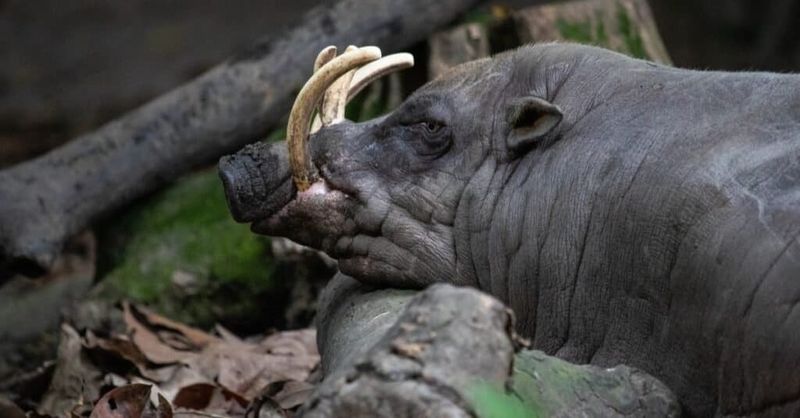
The evolutionary history of the babirusa is as puzzling as its physical traits. Genetic studies suggest they diverged from other pigs millions of years ago, yet their exact lineage remains unclear.
Fossil records provide limited clues, leaving much of their evolutionary past a mystery. This uncertainty sparks curiosity among scientists and enthusiasts alike.
Understanding the babirusa’s evolution could shed light on broader ecological and evolutionary processes, making it a subject of great interest in the scientific community.

